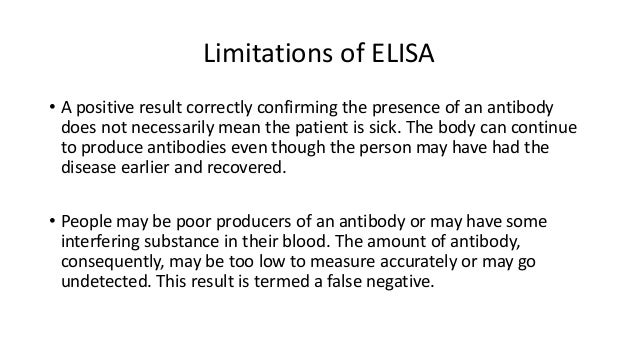

This assay combines immunological, biochemical and histological techniques for the detection of an antigen present in a section of tissue through the use of specific antibodies. In immunofluorescence assays, the detection of the antigen of interest through its binding to a specific antibody is visualized through the use of fluorophores. It is based on the use of enzymes that will allow the detection of antigen-antibody junctions (and therefore the presence of a certain antigen in the sample) by catalysing a colorimetric reaction by adding the corresponding substrate.ĥ.- CLIA (CHEMILUMINISCENCE IMMUNOASSAYS)Ĭhemiluminescence assays or CLIA share a principle with ELISA, with the difference that in this case the antigen-antibody binding is measured through the fluorescence generated by a chemical reaction.ĬLIA assays have the disadvantage that they require specific equipment to read fluorescence, but on the other hand, they have the advantage of being significantly more sensitive than conventional ELISAs. Of the different types of immunoassays, the ELISA is one of the most popular and most frequently used in research laboratories due to its easy implementation, its versality, and its high sensitivity and specifity. However, it also has a major handicap, and it is the potential danger of working with radioactive material. One of the advantages of the Radioimmunoassay is that it is a highly sensitive technique, which makes it possible to detect proteins that are found at very low concentrations in the sample. Subsequently, the radioactivity is read to detect the complexes and confirm and quantify the presence of the protein of interest in the sample. This immunoassay uses radioactive isotopes to label the antigen-antibody complex.

In addition to the detection and quantification of proteins, its applications are very varied, including the determination of the molecular weight of a certain antigen, the study of interactions between proteins or the monitoring of post-translational modifications. Immunoprecipitation is used to isolate a certain protein from the rest of the components present in a sample, through the precipitation of antigen-antibody complexes. With this technique, in addition to detecting the protein of interest, its size can be determined, confirm if there are post-translational modifications or compare its concentration in different samples, among others. Using the Western Blot technique, the proteins present in a given biological sample are separated based on their size by electrophoresis, to later be transferred to a membrane and stained with a specific antibody. TYPES OF IMMUNOASSAYS 1.- WESTERN BLOT (WB) Īt Abyntek Biopharma we have an extensive catalogue with more than 7 million references.Ĭontact us and we will advise you on which are the best kits or reagents to carry out your experiment. In this post we briefly review the 9 types of immunoassays that are most frequently carried out in research laboratories. The main basis shared by all immunoassays is that they are based on antigen-antibody avidity.Īpart from serving for the detection of molecules in the laboratory, they are used in the field of medicine for the diagnosis of multiple diseases.
#Western blot vs elisa sensitivity how to#
You will find general information about cookies and details on how to delete cookies from your device.Immunoassays are a set of biochemical techniques that are used to detect or quantify a certain molecule through an immunological reaction. Alternatively, you can visit which contains comprehensive information on how to do this on a wide variety of browsers and devices. If you want to restrict or block the cookies that are set by our website, you can do so through your browser setting. For example, we will recognize your username and remember how you customized the site during future visits. Functionality cookiesįunctionality cookies let us operate the site in accordance with the choices you make. For example, these cookies let us recognize that you have created an account and have logged into that account. Necessary cookies allow us to offer you the best possible experience when accessing and navigating through our website and using its features. What types of cookies do we use? Necessary cookies It will contain some anonymous information such as a unique identifier, website’s domain name, and some digits and numbers. Each cookie is unique to your web browser. What are cookies?Ĭookies are simple text files that are stored on your computer or mobile device by a website’s server. By visiting plati.market you agree that plati.market may use cookies to be processed by Google Analytics and Yandex.Metrika. Please read this cookie policy carefully before using plati.market operated by us.


 0 kommentar(er)
0 kommentar(er)
